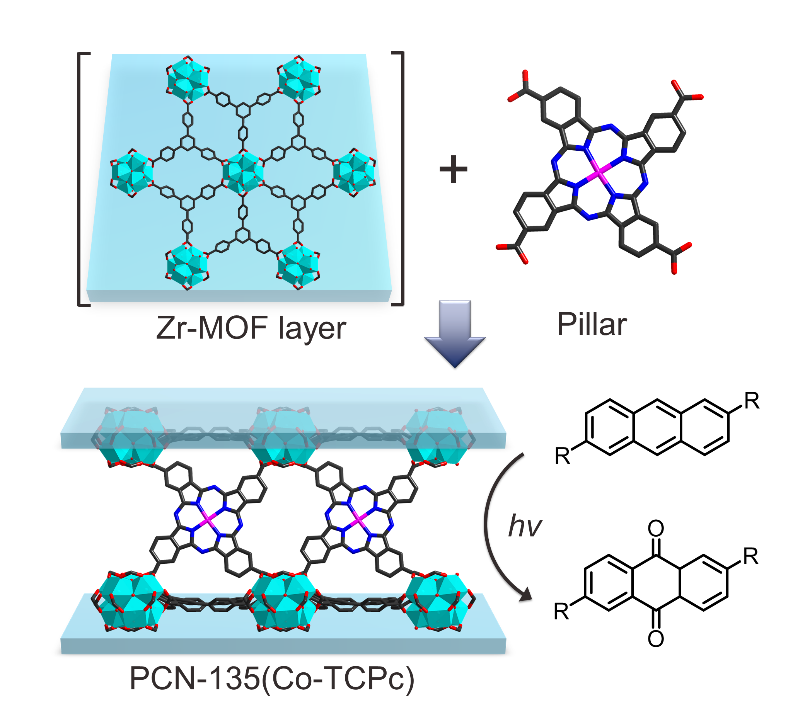Guan-Yu Qiaoa, Shuai Yuanb, Jiandong Pangb, Heng Raoa,c, Christina T. Lollarb, Dongbin Dangb, Jun-Sheng Qina,c,*, Hong-Cai Zhoub,d,*, and Jihong Yua,c,*. Angew. Chem., Int. Ed. DOI: 10.1002/anie.202007781.
a. State Key Laboratory of Inorganic Synthesis and Preparative Chemistry, College of Chemistry, Jilin University, Changchun 130012 (China).
b. Department of Chemistry Texas A&M University College Station, Texas 77843-3255 (USA).
c. International Center of Future Science, Jilin University, Changchun 130012 (China).
d. Department of Materials Science and Engineering, Texas A&M University, College Station, Texas 77843-3003 (USA).
Intriguing properties and functions are expected to implant into metal-organic layers (MOLs) to achieve tailored pore environments and multiple functionalities owing to the synergies among multiple components. Herein, we demonstrated a facile one-pot synthetic strategy to incorporate multi-functionalities into stable zirconium MOLs via secondary ligand pillaring. Through the combination of Zr6−BTB (BTB = benzene-1,3,5-tribenzoate) layers and diverse secondary ligands (including ditopic and tetratopic linkers), 31 MOFs with multi-functionalities were systematically prepared. Notably, a metal-phthalocyanine fragment was successfully incorporated into this Zr-MOL system, giving rise to an ideal platform for the selective oxidation of anthracene. We demonstrate that the organic functionalization of two-dimensional MOLs can generate tunable porous structures and environments, which may facilitate the excellent catalytic performance of as-synthesized materials.
